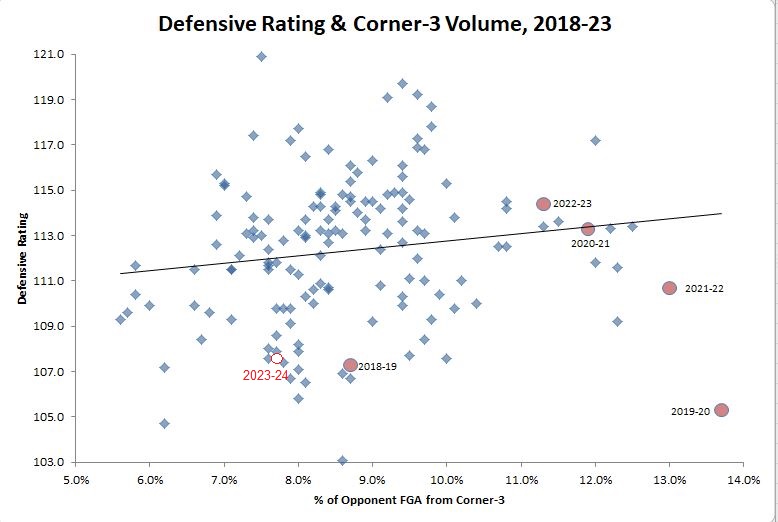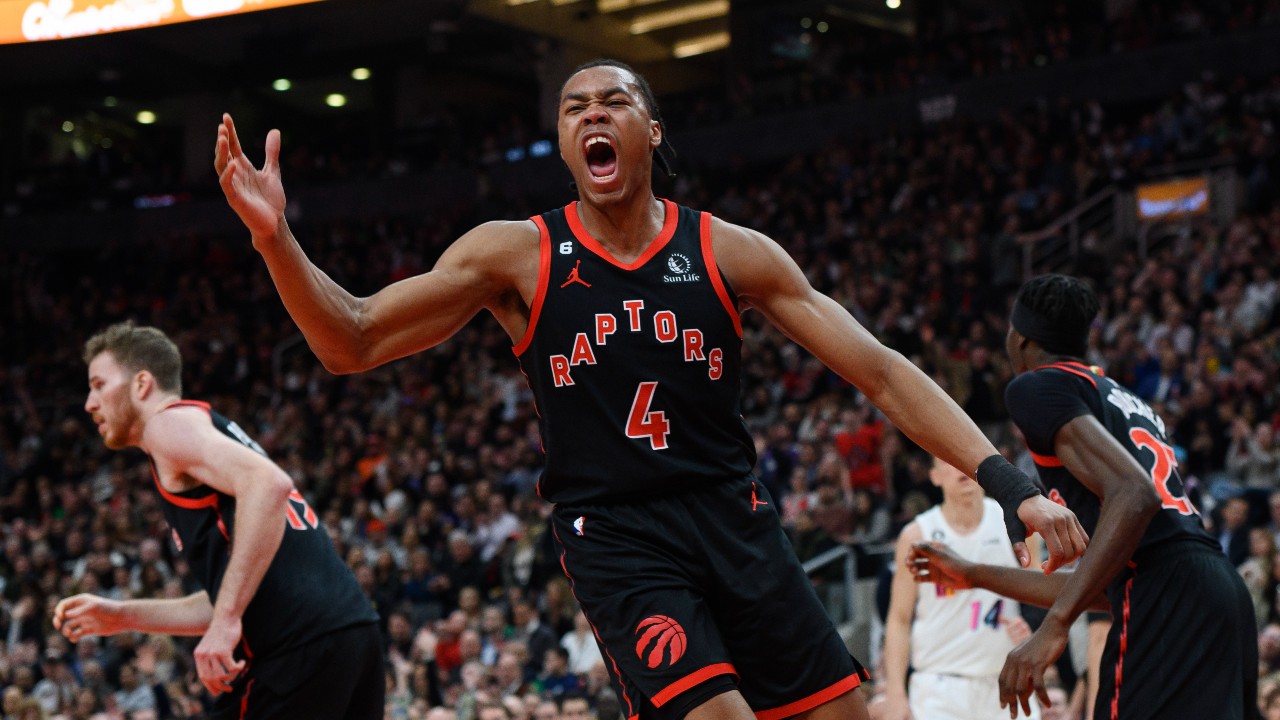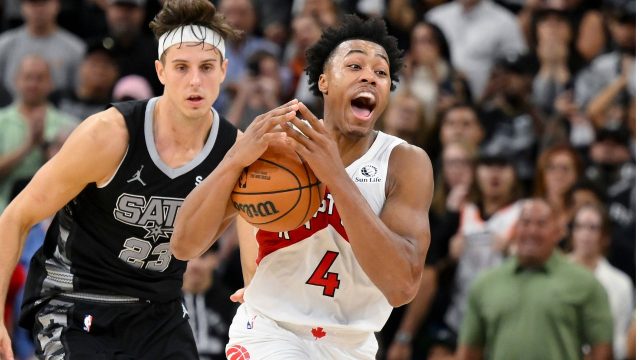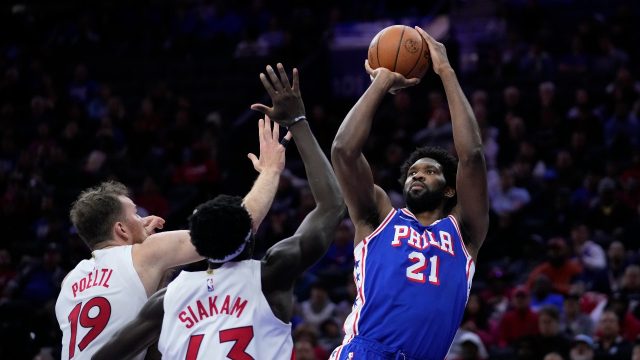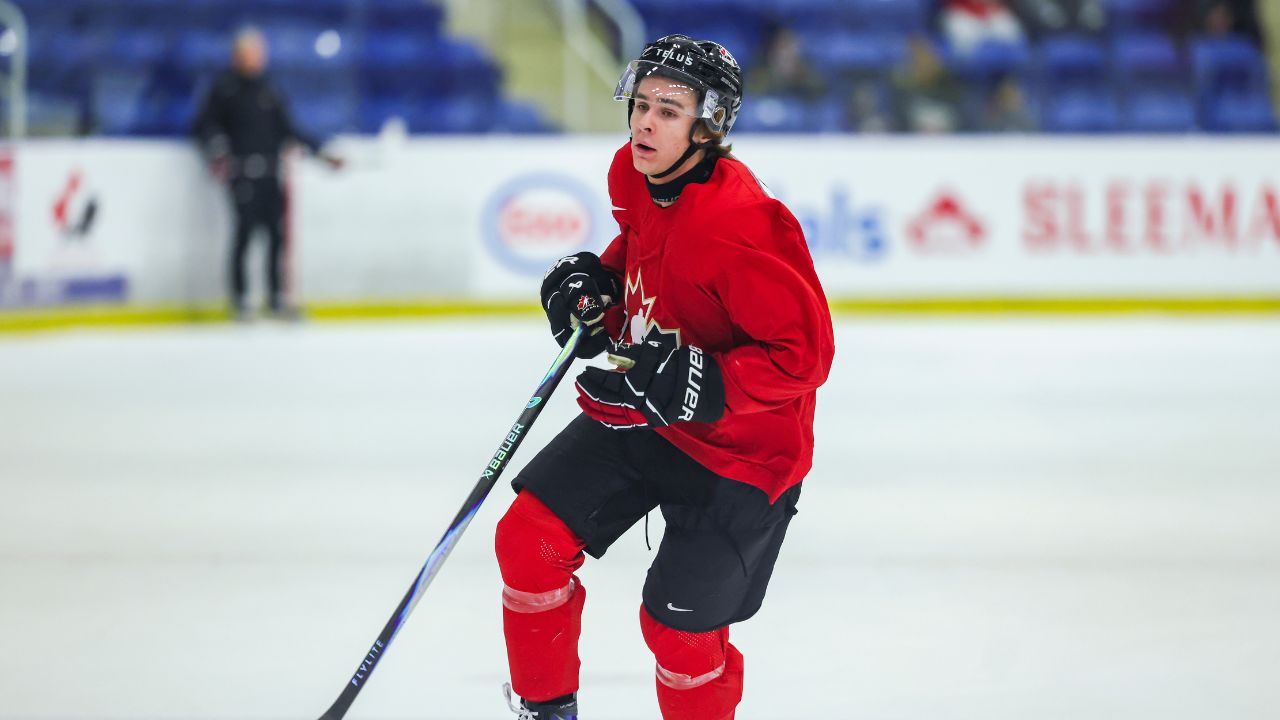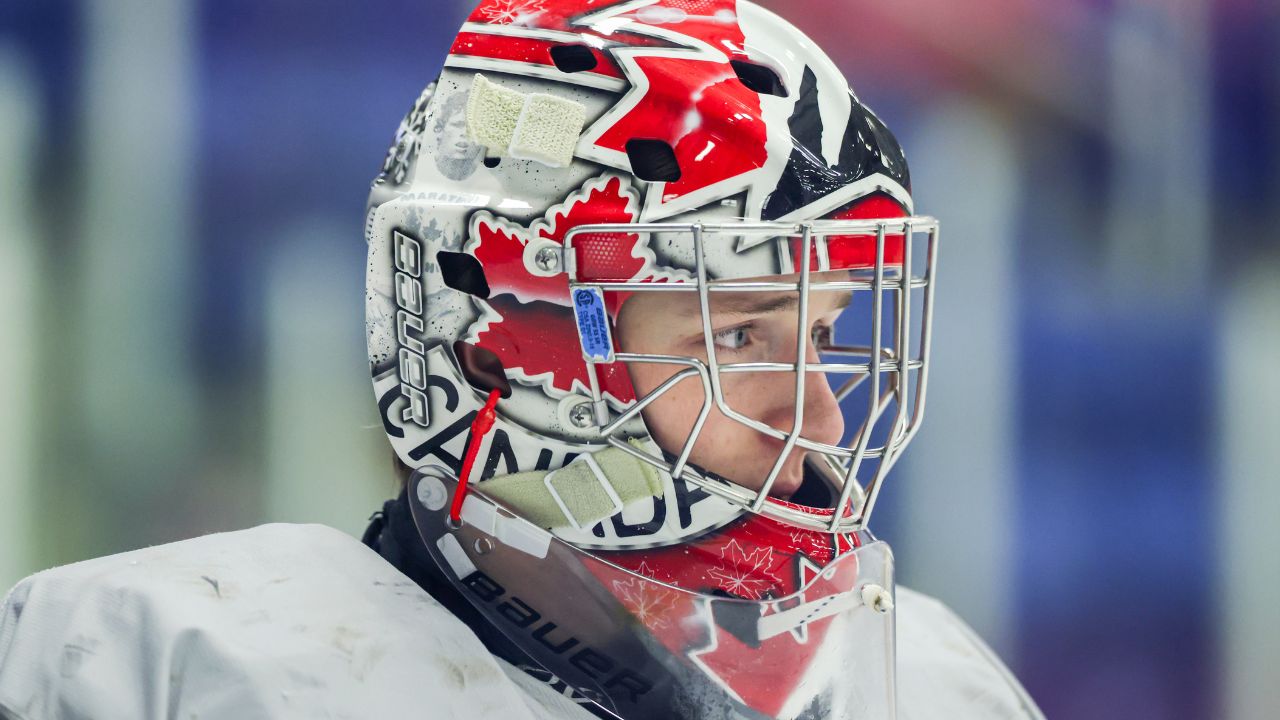
The Toronto Raptors defence is, so far, as advertised.
Sunday’s incredible 22-point comeback against the San Antonio Spurs was headlined by a monster performance from Scottie Barnes. He knocked down threes, he bullied smaller defenders in the paint, and completely took over.
He also locked in at the defensive end, something the Raptors uncharacteristically had not done as a group in the first half. You’re not going to erase a franchise-record-tying 17-point fourth-quarter deficit without getting a lot of stops; those gave Barnes and the Raptors enough runway to chip away at that lead. In a monster across-the-board game, it was Barnes’ defence – jumping an inbound route to steal the ball and prevent a Spurs buzzer-beater – that assured overtime. In the extra frame, the Spurs got next to nothing.
When looking at the team’s early offensive trends last week, our analysis was couched in the idea that they only need to be decent at scoring in the half court, because their defence should be excellent and their transition game is, as you’d expect, quite strong. On Sunday, the Raptors had their second-best performance scoring in the halfcourt, while their defence was average overall (quite bad and then very good) and transition attempts weren’t available at all.
It’s good to be able to win games in a variety of ways, and it was a very nice second-half showing from head coach Darko Rajakovic to find a way to piece this one together. Most nights, the defence will need to be their calling card bell-to-bell.
As explained in last week’s offensive piece, it’s still quite early to draw conclusions. Team-level stats don’t begin to stabilize until around the 20-game mark. This early, you’re looking for three things: How extreme is the change, how well does it line up with the priors, and if there’s a good underlying explanation for the change.
With that in mind, today we’ll look at five stat trends on the defensive side that I’m keeping an eye on over the next couple of weeks. If they continue, we’ll dive deeper into their root causes and takeaways.
1. The corner three is being prioritized
One of the changes we were most certain of Rajakovic making this year was a renewed emphasis on the corner three. If offences are designed to produce shots at the rim and corner threes, it stands to reason that good defences will want to limit those. For years, the Raptors bet that forcing turnovers and making stars uncomfortable were priorities, and if it meant role players got more corner looks, so be it. For a few years, it worked excellently. By the end of last year, it was time for a tweak.
And tweak they have. Raptors opponents are taking 7.7 per cent of their shots from the corner, the lowest mark they’ve allowed since 2017-18 under Dwane Casey. It’s the 10th-lowest rate in the league, after finishing top-three in each of the last four seasons.
That’s a dramatic turnaround. What’s even more encouraging is that all of those shots have been funnelled into lower-efficiency areas – the Raptors aren’t giving up many above-the-break threes, either, and they’ve gotten slightly better at keeping opponents away from the rim. It’s a step in the right direction.
2. They’re forcing far fewer turnovers, but it hasn’t cost them in transition offence
There are a lot of reasons to prioritize forcing turnovers on defence. For one, live-ball turnovers are the surest bet for points in the other direction, so they have both a scoreboard and a psychological swing effect. One of the unsaid reasons the Raptors emphasized the steal is that their halfcourt offence was not particularly strong. To wit, the Raptors pulled off a rare feat last year of being 25th in halfcourt offence but 12th in offence overall; that was thanks to a terrorizing transition attack.
The (minor) fear with dialing back the aggression this year was that fewer live turnovers would mean less transition offence. Since we don’t expect the halfcourt offence to be particularly strong, taking away those easy, high-efficiency transition opportunities could really hurt the overall offence.
So far, that hasn’t been the case. Toronto has had four games with transition production in the 92nd percentile or better, and the Spurs game was the only one they’ve been below-average in that regard.
While the Raptors have been able to run less (16.8 per cent of possessions, down from 17.6), they’ve been even more effective when they do. The result is the fourth-best transition attack in the league, down ranking wise but up on a per-possession basis from last year. That includes the league’s best offence attacking after grabbing a live defensive rebound, no surprise given the way Toronto’s wings and Dennis Schroder look to push.
3. Dialling back the turnover aggression has let the Raptors defend better
We know the Raptors have strong individual defenders, and I’ve argued for a few seasons now that they could stand to trust them to just guard their man more often. When I asked Rajakovic in the pre=season about shifting to more conservative help, trap, and gamble principles, he pointed out that all the same things that make players good at that scheme — length, speed, strength, anticipation — should make them very hard to shoot over, too.
It’s noisy, but so far the results are encouraging, as Raptors opponents are shooting the lowest effective field-goal percentage in the league at 48.8 per cent.
That’s almost certainly going to regress. Last year, no team held opponents to an eFG% of less than 52. (eFG% is field-goal percentage adjusted for the additional value of three-point shots. League average was 54.8 per cent in 2022-23.) Even with some regression, we’d expect the Raptors to do well here — they force opponents to take a somewhat inefficient shot mix, and they have tremendous length to disrupt or hurry jump shots.
There are two concerns with the defence right now. The first is that opponents shoot very well when they can get to the rim, meaning the Raptors need to either better contest in the paint or do an even better job keeping teams out of there. The other is that, too often, stops don’t remain stops.
4. There is a defensive rebounding problem, and it’s costing them the possession battle
Last year, the Raptors blew away the pre-existing league record for dominating the possession battle. They were No. 1 in forcing opponent turnovers and limiting turnovers themselves, creating a monstrous turnover advantage. They also managed to be a league-average defensive rebounding team while being a top-three offensive rebounding team.
The result was that in an average game, they were getting almost 10 extra shooting possessions than their opponent. That’s a really good way to tilt the game your way if you don’t have the offensive talent of the other team.
As mentioned, this year’s Raptors team has deemphasized forcing turnovers to some degree. They’ve also turned the ball over a lot more as a by-product of trying to install a more pass-oriented attack, where patience is required. Those are things they’ll have to live with for now.
What they don’t have to live with is being 28th in defensive rebounding. That has cost them a ton of second-chance points, creating situations where the Raptors execute a strong defensive possession and then see the opponent get a put-back anyway. It can be demoralizing, and they’re not strong enough on the offensive glass to make up for it.
After setting a record for possession advantage last year, they’ve had 25 fewer shooting possessions than their opponents through seven games this year.
This can’t sustain. The defensive changes should keep players closer to their man to box out and more sure of their defensive rebounding assignment, as there’s less scrambling around late in a possession. They added Jakob Poeltl in part to help with this. Their forwards are enabled to grab a defensive rebound and push on the break, which is always fun. They don’t have to be elite on their own glass, but they can’t be right near the bottom of the league.
5. OG Anunoby is a Defensive Player of the Year candidate
Almost everyone has contributed to the strong defence, which ranks seventh overall and fourth in the halfcourt so far. Barnes has been unlocked being used primarily in the lower half of the floor, as we’ve suggested and discussed on The Raptors Show, and could threaten Marcus Camby’s team record for steals-plus-blocks in a season. Pascal Siakam’s offensive struggles have not at all carried over to the defensive end. Schroder has filled in for All-Hands Team player Fred Van Vleet.
It’s Anunoby, though, who makes it all work. He can guard anyone, spending time on Joel Embiid and Tyrese Maxey in one game, Damian Lillard and Giannis Antetokounmpo in another, and Victor Wembanyama in yet another. He’s been the league’s most versatile defender, position-wise, for years. He steals, he blocks, he denies position and denies ball, and he frustrates.
Last year, Anunoby was finally rewarded with his first All-Defensive Team nod. Nobody is going to make Defensive Player of the Year ballots if the team isn’t reasonably good and the team’s defence isn’t really strong, so not all of this is within Anunoby’s control. What is in his control, he’s controlled exceptionally well – the Raptors are 21.1 points per-100 possessions better defensively with Anunoby on the floor, and while that sample is small, he was also one of the league’s most impactful defenders, statistically and by the eye test, last year.
It’s very difficult for a non-big to win DPOY, historically. At this rate, he’ll at least be on some ballots.


